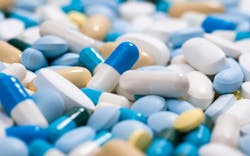Researchers redesign common drug to improve its biodegradability
Is it possible to reformulate medicines so that they break down better in the environment? Researchers in Germany asked this question while testing methods to remove micropollutants from wastewater.
They found that a drug commonly used to treat high blood pressure could be modified into a form that should still be pharmacologically active but that breaks down more easily in wastewater treatment.
At the moment, traces of many pharmaceutical products can persist through wastewater treatment and end up in waterways, potentially causing harm to fish and other aquatic creatures. Researchers around the world have been working on ways to remove these contaminants from wastewater, but this latest study introduces a new approach by designing replacement drugs that biodegrade once they reach the environment.
Noting that exposure to ultraviolet light can transform compounds into more biodegradable products, Klaus K¸mmerer and his team at Leuphana University set out to discover whether this technique could also be used to synthesize more biodegradable alternatives to existing drugs.
The scientists tested the idea on propranolol, a beta blocker that does not biodegrade in wastewater and is toxic to some aquatic species when they are chronically exposed to it.
In a paper published in the journal Environmental Science & Technology, the researchers describe how they dissolved the drug in pure water and exposed it to UV light for about four hours. This produced 16 derivative products which were incubated with effluent from a sewage treatment plant to test their biodegradability.
The team found that the most biodegradable derivatives were the ones that underwent changes that opened up their structure, allowing easier access for microbes to digest the drug.
Using a range of techniques, the researchers predicted that most promising derivative, 4-hydroxypropranolol, may have similar drug activity to propranolol, as well as low toxicity and good absorption.
The team believe this approach could be used to explore biodegradable alternatives for most drugs and other micropollutants, such as those found in personal care products.
“Application of such approaches in turn might contribute to the protection of water resources in a truly sustainable manner,” they concluded.
